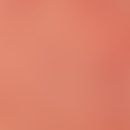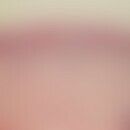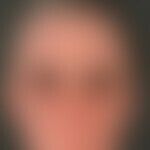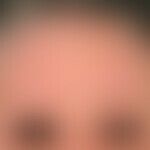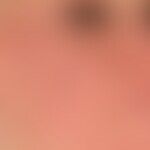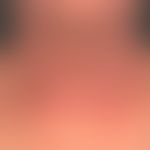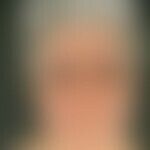Synonym(s)
HistoryThis section has been translated automatically.
DefinitionThis section has been translated automatically.
Relatively rare, eminently chronic, extremely itchy or burning, therapy-resistant, eczematous skin disease in light-exposed areas, which can be provoked by UVB radiation at the beginning of the disease and also by UVA radiation or normal daylight (non-specific) as the disease progresses.
In many cases, the triggering phototoallergen can no longer be determined.
There is a seasonal dependency with intensification of the skin symptoms in the summer months.
You might also be interested in
ClassificationThis section has been translated automatically.
The term "chronic actinic dermatitis", CAD for short, is an umbrella term (or is also used synonymously) for various previously described light dermatoses.
These include:
- Chronic actinic dermatitis of the"persistent light reaction" type
- Chronic actinic dermatitis of the"actinic reticuloid" type (maximum form of chronic actinic dermatitis)
- Chronic actinic dermatitis type "photoallergic dermatitis"
- Chronic actinic dermatitis type "photosensitive atopic dermatitis"
EtiopathogenesisThis section has been translated automatically.
The pathomechanism of the disease is unclear. It is assumed that a photo-induced antigen leads to a delayed-type hypersensitivity reaction, analogous to allergic contact dermatitis.
However, it is not so much exogenous allergens that are suspected, but rather endogenous photoreactive autoantigens that are formed as a result of electromagnetic irradiation.
The triggering action spectrum is usually in the UVB and UVA range; more rarely and with persistence over several years also in the visible light spectrum.
ManifestationThis section has been translated automatically.
Men in middle and old age are particularly affected. Ratio m:w=10:1
LocalizationThis section has been translated automatically.
Predilection sites are the entire face, neck and nape as well as the back of the hands. The retroauricular region remains free (DD Airborne Contact Dermatitis), as does the chin shadow. In the most severe form of the disease, the entire integument can be affected (very rare) because even the smallest doses of daylight or UV radiation are sufficient to trigger and maintain a photoallergic reaction.
Clinical featuresThis section has been translated automatically.
See also under the individual clinical pictures.
There are usually extensive, massively itchy, painful, chronic eczematous, scaly skin changes with considerable lichenification and clear inflammatory infiltration of the skin, which leads to a leathery increase in the consistency of the lesional areas. The skin changes are clearly demarcated from the unexposed skin, although this transition is not sharp in a linear fashion, but is irregularly loosened. Dermatitic scattering phenomena can also occur in areas of skin covered by clothing.
The skin changes persist for months after low UV exposure and can subside in winter, only to exacerbate and persist again in spring after brief UV exposure.
After a number of years, this rhythm is lost and the eczematous skin changes persist all year round, with an additional worsening of the chronic eczema condition occurring in the light-rich season.
Facies leontina as the maximum manifestation of chronic actinic dermatitis (so-called actinic reticuloid) in the facial area is possible.
HistologyThis section has been translated automatically.
Picture of chronic, lichenified dermatitis with partly psoriasiform acanthosis, extension of the retele ridges, hyperkeratosis with parakeratotic parts, perivascular, partly also diffuse, very dense, predominantly lymphocytic infiltrate in the upper dermis, with mild to marked dermal fibrosis (depending on the duration of the eczema reaction). Mostly proliferation of wall-thickened capillaries in the infiltrate zone. Focally very differently pronounced (depending on the degree of acuity of the eczema reaction) epidermotropia with spongiosis. If the epidermotropic infiltrate is very dense, a cutaneous T-cell lymphoma of the mycosis fungoides type should be considered in the differential diagnosis.
Differential diagnosisThis section has been translated automatically.
Clinical:
- Contact allergic dermatitis: Aerogenic contact allergic eczema in particular is important to differentiate. An analogous clinical picture may be present. The connection between the triggering contact principle and the skin changes must be investigated anamnestically.
- Photoaggravated atopic dermatitis: Worsening of eczematous skin symptoms in previously known extrinsic atopic dermatitis under UV (usually UVA) or sunlight exposure. An auxiliary diagnostic sign in differentiation from aerogenic contact allergic eczema is the exposed chin (chin shadow) with the retroauricular region.
- Actinic reticuloid: no real differential diagnosis, as actinic reticuloid is regarded as a (maximum) variant of chronic actinic dermatitis.
- Acute dermatitis solaris: Acute event with painful dermatitis sharply limited to the site of exposure (no marginal scattering phenomena). The clinical relationship to the triggering situation is usually clear.
Histologic:
- Lymphomatoid contact dermatitis: quite analogous histologic picture with acanthosis, band-shaped lymphoid cell infiltrate, epidermotropism: Clinic excludes this DD.
- Mycosis fungoides (also other T-cell lymphomas): Depending on the stage of the disease, an analogous histologic picture may occur; however, a clear cell polymorphism is usually to be expected. Clonality examinations are useful for differentiation. Ultimately, the summarizing evaluation of clinical and histological findings is decisive.
- Atopic dermatitis: UV-triggered atopic eczema may show an analogous histologic pattern.
TherapyThis section has been translated automatically.
The focus is on strict prophylaxis (see there). Further therapeutic measures; see below. Reticuloid, actinic.
Internal therapyThis section has been translated automatically.
In therapy-resistant cases, systemic immunosuppression with glucocorticoids or azathioprine/cyclosporine A is necessary. Immunosuppressive combination therapy is advisable in the early phase of PUVA therapy.
Progression/forecastThis section has been translated automatically.
The disease is highly chronic and tends to worsen as the duration of the disease increases due to increased sensitivity to light. Minimal exposure to light can lead to long-term eczema reactions in the affected areas.
ProphylaxisThis section has been translated automatically.
- Protection through clothing: Covering the skin with clothing is an effective light protection with few side effects. It should be noted, however, that fabrics vary depending on the fibre, dye and especially the type and size of knitwear and that a considerable proportion of the radiation can penetrate the textile in low-density fabrics.
- Chemical sunscreens: By absorbing UV light, these substances prevent the primary photochemical reaction in the skin. Added antioxidants additionally reduce the secondary photochemical reactions of the body's own molecules. Mainly in the UV-B range, substances from the substance groups of paraaminobenzoic acid derivatives, salicylates, camphor derivatives, cinnamic acid esters and benzimidazole derivatives absorb. So-called broadband filters such as dibenzoylmethanes and benzophenones absorb both UV-B and UV-A.
- Physical light stabilizers: Pigments of titanium oxide, iron oxide or also zinc oxide in a particle size of 10-60 nm absorb in the range of UV light, but hardly reflect visible light. They can be used in a wide range of applications. The formation of dangerous radicals can be completely prevented by coating the pigment granules or by doping, a kind of contamination of the crystal lattice.
- Light-hardening: Photo(chemo)therapy or narrow band UVB in very low dosages (see also reticuloid actinic).
TablesThis section has been translated automatically.
Criteria and differentiation for the classification of chronic photosensitive eczematous skin diseases (modified according to mildness)
Diagnosis |
Histology |
Photosensitivity |
Photopatch test |
Patch test |
Persistent light reaction |
Cancellous Dermatitis |
UVB, (UVA) |
+ |
+/- |
Actinic reticuloid |
Mycosis fungoides-like |
UVB, UVA, (visible light) |
- |
+/- |
Photoallergic eczema |
Cancellous Dermatitis |
UVB, (UVA), (visible light) |
+/- |
+/- |
Photoaggraved endogenous eczema |
Cancellous Dermatitis |
UVA, (UVB) |
- |
+/- |
Test location |
Skin region not exposed to light |
Test Fields |
5 x 5 cm |
Radiation sources |
UV-A:Fluorescent lamp (Philips TL 09 N, TL 10 R) Metal halide lamps (340 - 400 nm) UV-B. Fluorescent lamps (Philips TL 12, 285 - 350 nm) Visible light: Slide projector |
Radiation doses |
UV-A. 1.0, 10, 30 J/cm2 UV-B: 0.5, 1.0, 1.5 times MED Visible light: 30J/cm2 |
Reading |
24, 48, 72 h after irradiation |
LiteratureThis section has been translated automatically.
- Bhari N et al (2017) Tacrolimus 0.1% ointment applied under occlusion using cling film clears chronic
actinic dermatitis resistant to systemic treatment.Int J Dermatol 56:e139-e141. - Dawe RS (2003) Diagnosis and treatment of chronic actinic dermatitis. Dermatol Ther 16: 45-51
- Lehmann P et al (2011) Light dermatoses: Diagnostics and overview. Dt Ärztebl 108: 135-141
- Ling TC et al (2003) Treatment of polymorphic light eruption. Photodermatol Photoimmunol Photomed 19: 217-227
- Mang R et al (2003) Sun protection during holidays. dermatologist 54: 498-505
- McCall CO (2003) Treatment of chronic actinic dermatitis with tacrolimus ointment. J Am Acad Dermatol 49: 775
- O'Gorman SM et al (2014) Photoaggravated disorders. Dermatol Clin 32:385-398
- Paek SYet al (2014) Chronic actinic dermatitis. Dermatol Clin 32:355-361
- Wolf C et al (1988) The syndrome of chronic actinic dermatitis. Dermatologist 39: 635-641
- Yap LM et al (2003) Chronic actinic dermatitis: A retrospective analysis of 44 cases referred to an Australian photobiology clinic. Australas J Dermatol 44: 256-262
Incoming links (8)
Actinic reticuloid; Chronic actinic dermatitis; Light eczema; Light-hardening; Morbus Morbihan ; Persistent light reaction; Photoallergy (overview); Prurigo actinic;Outgoing links (20)
Acanthosis; Actinic reticuloid; Airborne contact dermatitis; Antioxidants; Atopic dermatitis (overview); Atopic photoaggravated dermatitis; Contact dermatitis allergic; Contact dermatitis lymphomatoids; Epidermotropy; Facies leontina; ... Show allDisclaimer
Please ask your physician for a reliable diagnosis. This website is only meant as a reference.
